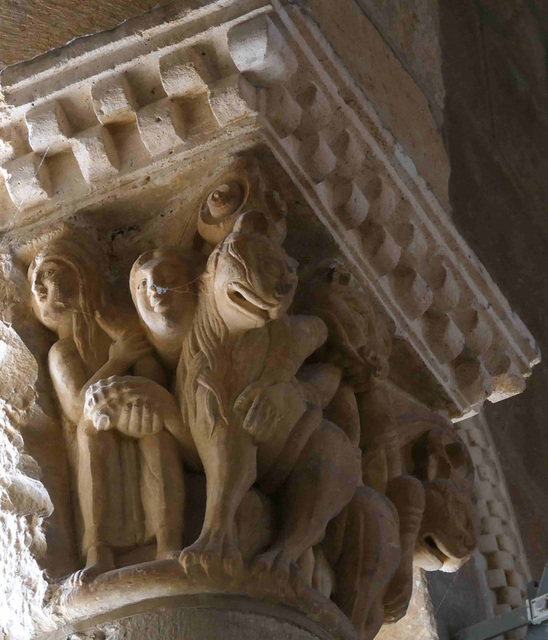León - Basílica de San Isidoro
León - Basílica de San Isidoro
León - Basílica de San Isidoro
León - Basílica de San Isidoro
León - Palacio del Conde Luna
León - Palacio del Conde Luna
León - Mercado del Conde Luna
León - Frutos Secos
Grajal de Campos - Castillo
Becerril de Campos - Casa consistorial
Becerril de Campos - R6 GTL
Palencia - Catedral de San Antolín
Palencia - Catedral de San Antolín
Palencia - Catedral de San Antolín
Palencia - Catedral de San Antolín
Palencia - Catedral de San Antolín
Palencia - Catedral de San Antolín
Palencia - Catedral de San Antolín
Palencia - Catedral de San Antolín
Palencia - Churrería - "El Mara"
Palencia - San Miguel
Palencia - Casa del Cordón
Palencia - Museo Arqueológico Provincial
León - Basílica de San Isidoro
León - Basílica de San Isidoro
León - Basílica de San Isidoro
León - Basílica de San Isidoro
León - Basílica de San Isidoro
León - Basílica de San Isidoro
León - Basílica de San Isidoro
León - Basílica de San Isidoro
León - Plaza del Grano
León - Catedral de León
León - Catedral de León
León - Catedral de León
León - Catedral de León
León - Catedral de León
León - Catedral de León
León - Catedral de León
León - Catedral de León
León - Catedral de León
León - Catedral de León
León - Catedral de León
León - Catedral de León
León - Catedral de León
Location
See also...
Keywords
Authorizations, license
-
Visible by: Everyone -
All rights reserved
-
29 visits
León - Basílica de San Isidoro


León was founded in 68 AD for a Roman legion from which they were supposed to pacify the rebellious mountain dwellers of Asturias and Cantabria. The name of the settlement that was then developed is based on a refined form of the Latin word "legio".
After the end of the Roman Empire, the city was conquered by the Visigoths and in 712 by the Moors. In 856, after the reconquest under King Ordoño I of Asturias, the city was repopulated. Ordoño II made León the capital of his kingdom of León in 914. Sacked by Almanzor in about 987, the city was reconstructed and repopulated by Alfonso V,
León was an important stop on the Way of St. James to Santiago de Compostela. Traders and artisans settled in the suburbs and had a strong influence on the development of the city from the 13th century onwards. In the early Middle Ages, the city became prosperous through the cattle trade. However, from the 16th century until the 19th century, the economy and population declined.
The Basílica de San Isidoro de León is located on the site of an ancient temple to the Roman god Mercury. In the 10th century, the kings of León established a community of Benedictine sisters on the site.
Following the conquest of the area by Al-Mansur (938–1002), the church was destroyed and the area devastated. León was repopulated and a new church and monastery established in the 11th century by Alfonso V of León.
In 1063 the basilica was dedicated to Saint Isidore of Seville. Isidore was the archbishop of Seville and the most celebrated academic of Visigothic Spain in the period preceding the Arab invasions. With the agreement of the Muslim ruler of Seville, Isidore's relics were brought to Leon where they could be interred on Christian soil.
The church benefited from its position on the pilgrimage route to Santiago de Compostella. Sculptors, stonemasons, and artists from across Europe gathered to work on the monastery.
There are interesting capitals along the nave.
Cuddling a lion
After the end of the Roman Empire, the city was conquered by the Visigoths and in 712 by the Moors. In 856, after the reconquest under King Ordoño I of Asturias, the city was repopulated. Ordoño II made León the capital of his kingdom of León in 914. Sacked by Almanzor in about 987, the city was reconstructed and repopulated by Alfonso V,
León was an important stop on the Way of St. James to Santiago de Compostela. Traders and artisans settled in the suburbs and had a strong influence on the development of the city from the 13th century onwards. In the early Middle Ages, the city became prosperous through the cattle trade. However, from the 16th century until the 19th century, the economy and population declined.
The Basílica de San Isidoro de León is located on the site of an ancient temple to the Roman god Mercury. In the 10th century, the kings of León established a community of Benedictine sisters on the site.
Following the conquest of the area by Al-Mansur (938–1002), the church was destroyed and the area devastated. León was repopulated and a new church and monastery established in the 11th century by Alfonso V of León.
In 1063 the basilica was dedicated to Saint Isidore of Seville. Isidore was the archbishop of Seville and the most celebrated academic of Visigothic Spain in the period preceding the Arab invasions. With the agreement of the Muslim ruler of Seville, Isidore's relics were brought to Leon where they could be interred on Christian soil.
The church benefited from its position on the pilgrimage route to Santiago de Compostella. Sculptors, stonemasons, and artists from across Europe gathered to work on the monastery.
There are interesting capitals along the nave.
Cuddling a lion
- Keyboard shortcuts:
Jump to top
RSS feed- Latest comments - Subscribe to the comment feeds of this photo
- ipernity © 2007-2024
- Help & Contact
|
Club news
|
About ipernity
|
History |
ipernity Club & Prices |
Guide of good conduct
Donate | Group guidelines | Privacy policy | Terms of use | Statutes | In memoria -
Facebook
Twitter

Sign-in to write a comment.